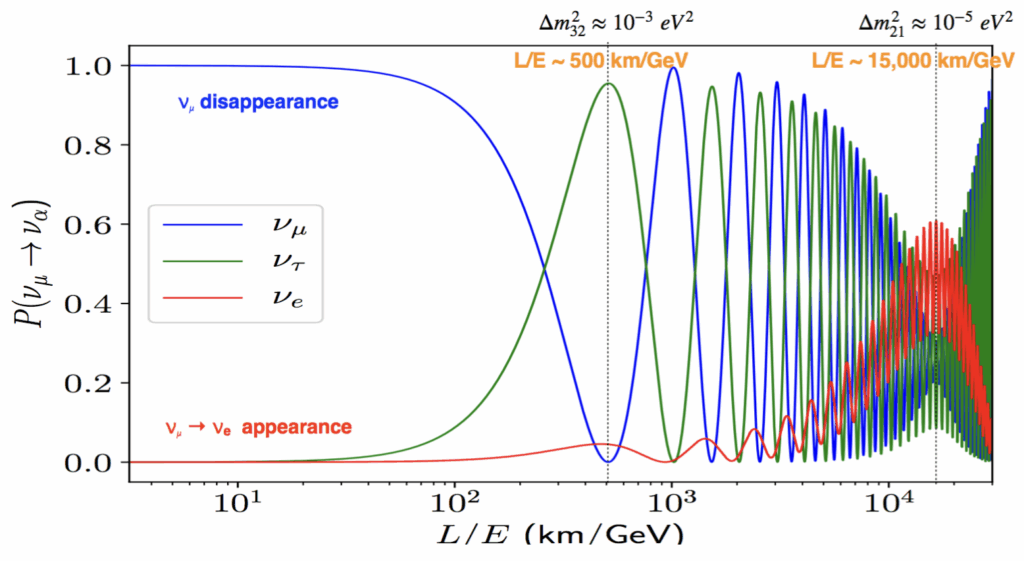Neutrino oscillation is a quantum mechanical phenomenon in which a neutrino created with a specific lepton family number (“lepton flavor”: electron, muon, or tau) can later be measured to have a different lepton family number. The probability of measuring a particular flavor for a neutrino varies between three known states, as it propagates through space.
First predicted by Bruno Pontecorvo in 1957, neutrino oscillation has since been observed by a multitude of experiments in several different contexts. Most notably, the existence of neutrino oscillation resolved the long-standing solar neutrino problem.
Neutrino oscillation is of great theoretical and experimental interest, as the precise properties of the process can shed light on several properties of the neutrino. In particular, it implies that the neutrino has a non-zero mass, which requires a modification to the Standard Model of particle physics. The experimental discovery of neutrino oscillation, and thus neutrino mass, by the Super-Kamiokande Observatory and the Sudbury Neutrino Observatories was recognized with the 2015 Nobel Prize for Physics.

Neutrino oscillation probabilities depend on the L/E ratio (see figure), being L the distance between the neutrino source and the detector, and E the neutrino energy. They are governed by six fundamental parameters: three mixing angles (θ12, θ23, θ13), which drive the amplitudes of the different oscillation modes, two squared mass splittings (Δm212, Δm223) which determine the oscillation frequency, and a CP violation phase (δCP), which somehow embeds the different behaviors between neutrinos and antineutrinos. Four of those parameters have been determined with reasonable precission over the past 25 years, in experiments such as Super-Kamiokande, SNO, Kamland, K2K, Daya-Bay, Double-Chooz, NOvΑ and T2K, while the sign of Δm223, ussually known as atmospheric mass hierarchy, and δCP, still need to be measured. A new generation of experiments, which includes DUNE and HK, will address those open questions during the next decade.
The experimental neutrino group at IFIC has been involved in many neutrino oscillation studies, including the ones in T2K, where we had key contributions to a number of PhD theses and articles. We are currently devoted to the design and construction of the future DUNE experiment.
